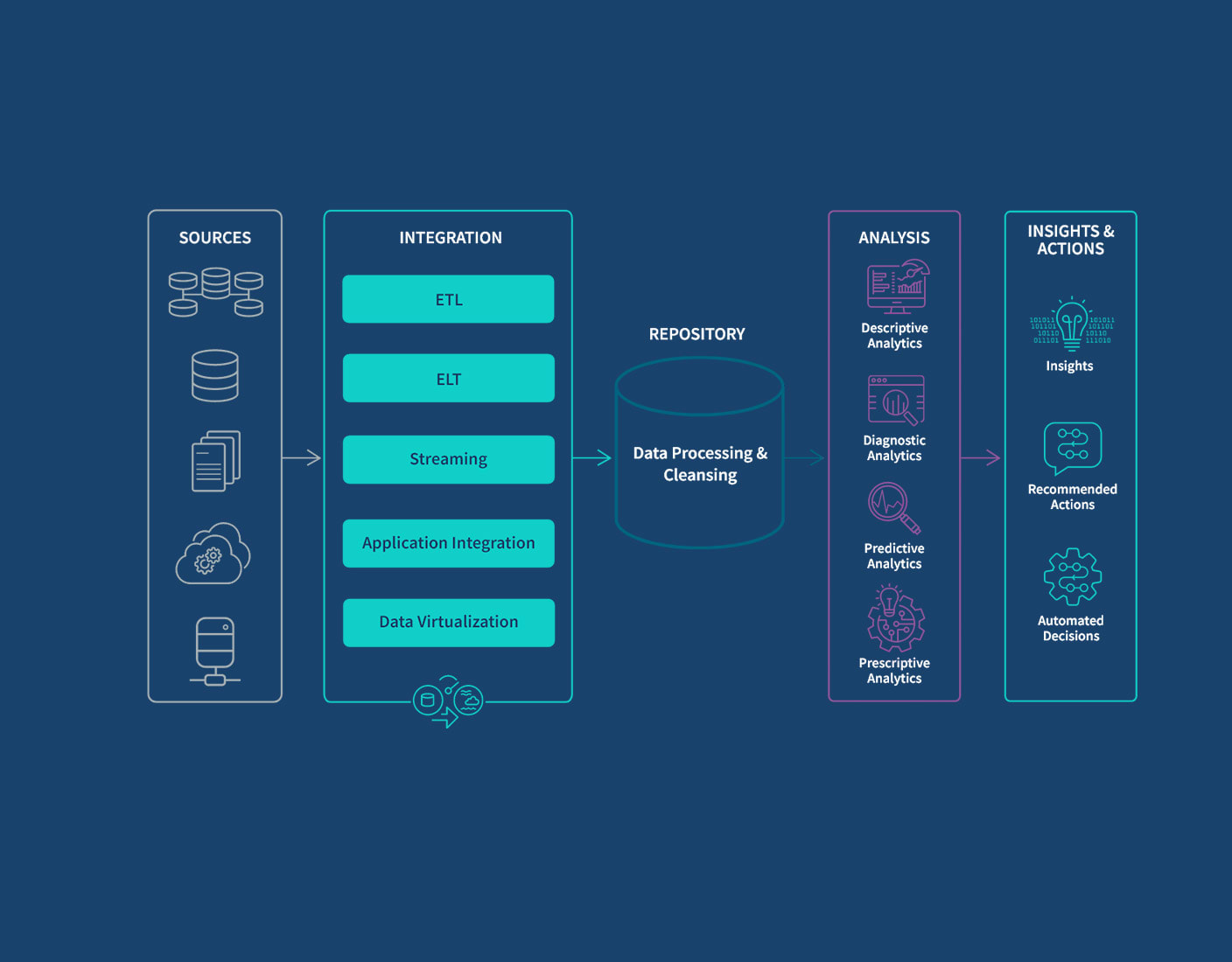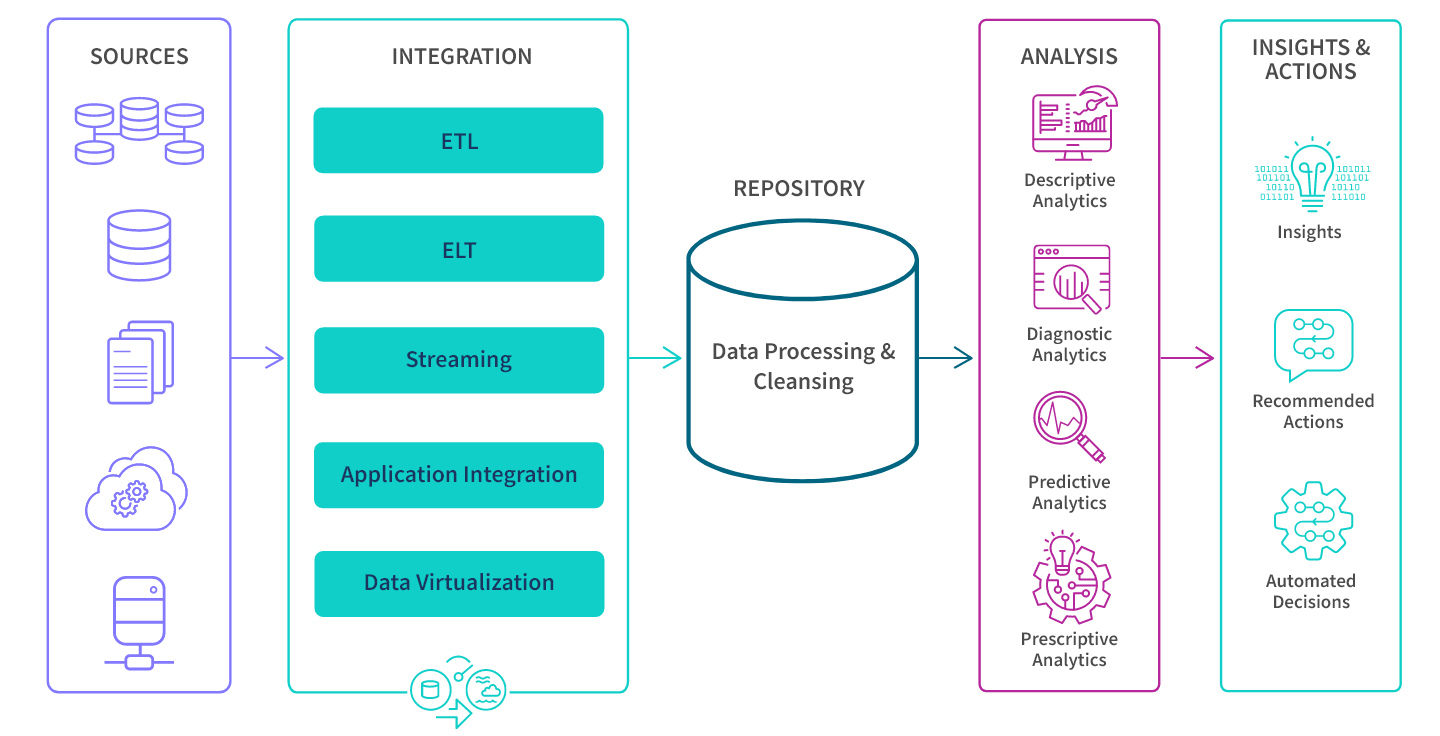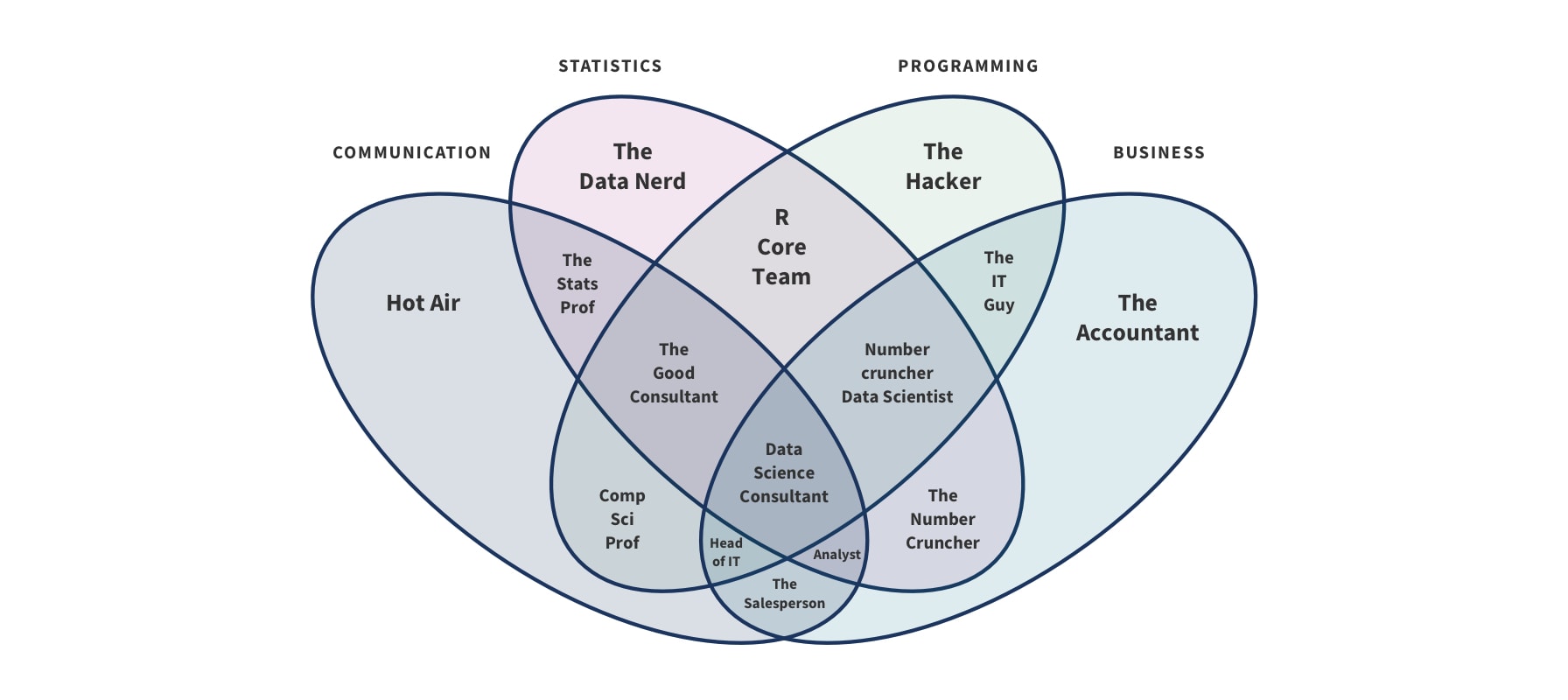You have many tools to choose from. The best tool for you is the one that fits your needs and skillset.
Microsoft Excel and Google Sheets spreadsheets are great for small datasets and quick insights. You’re probably familiar with these simple tools and know that they’re versatile for basic data cleaning, analysis, and visualization.
SQL (Structured Query Language) provides a standardized language for querying and manipulating relational databases, enabling you to extract, transform, and analyze data efficiently through commands that facilitate tasks such as filtering, sorting, and aggregating data.
Self-service analytics tools such as Qlik, Power BI, and Tableau enable you to easily analyze and visualize large data sets without the need for writing code. The best tools include augmented analytics that uses artificial intelligence (AI) and machine learning to enhance human intuition with suggested insights and analyses, automation of tasks, search & natural language interaction, and advanced analytics calculation.
Python is a versatile and widely-used programming language that has become a popular tool for data analysis, offering extensive libraries such as Pandas, NumPy, and Matplotlib that enable you to efficiently manipulate, analyze, and visualize data, making it a robust choice for a wide range of data-driven tasks.
R is a programming language and software environment specifically designed for statistical computing and graphics.
SAS (Statistical Analysis System) software suite is used for advanced analytics, business intelligence, and data management.
Apache Spark is an open-source, distributed computing system that can process large-scale data and perform advanced analytics.
Jupyter Notebooks is an open-source web application that allows you to create and share documents that contain live code, equations, visualizations, and narrative text.
KNIME is an open-source data analysis, reporting, and integration platform that allows users to visually design data workflows.
MATLAB is a programming and numeric computing environment widely used in academia and industry for tasks such as data analysis, simulation, and data modeling.
D3.js is a JavaScript library for producing dynamic, interactive data visualizations in web browsers.























































